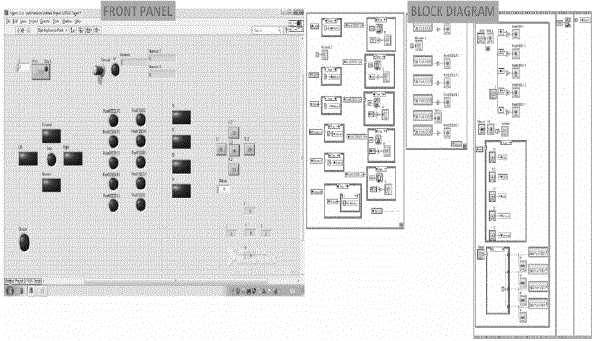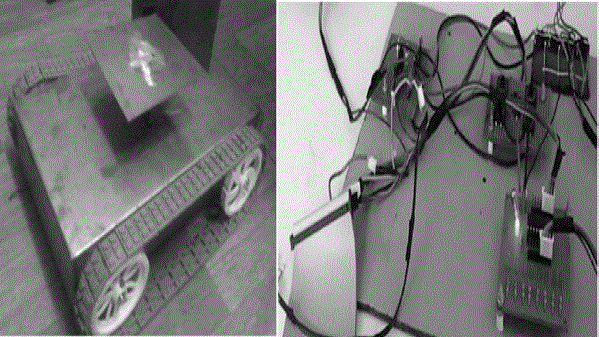ISSN ONLINE(2278-8875) PRINT (2320-3765)
ISSN ONLINE(2278-8875) PRINT (2320-3765)
Sathish Kumar.J, Suresh.R, Lingesh Kumhar.M, Sarath Kumar.C.S
|
| Related article at Pubmed, Scholar Google |
Visit for more related articles at International Journal of Advanced Research in Electrical, Electronics and Instrumentation Engineering
The main objective is to design and develop an autonomous robotic assistive aid navigation system for disabled. It reports the basic fundamental works in developing a robotic assistive system that involves the movement that enables the user to have command over the robot, its direction of and obstacle detection to avoid collision. The paper also concentrates on developing this system to be reliable climbing on staircase, slippery and uneven surfaces with assistance of artificial intellectual remote controlling making mobility easy for disabled people which is entirely autonomous. The system consists of sensors, onboard FPGA chip (SBRIO 9611), motors, buttons and power supply
INTRODUCTION |
||||
| A survey conducted by WHO says about 10 percent of world’s population face locomotion disability, among which 2 percent in India including paralysis, as suggested by National Sample Survey. Every existing systems provides hefty hardware and huge size making the movement difficult in ramps and narrow doorways. We propose a system which is focused to overcome the above discussed challenges. Thus, make a mobility device with intelligent and autonomous system, leads to develop new strategies taking into account in one hand, environment dynamics, and in other hand, obstacle detection using sensorial system. | ||||
PROPOSED SYSTEM |
||||
| The system is aimed to design using LabVIEW with the following features – Obstacle detection, movement on stairs, slippery and uneven surfaces and artificial intelligence control. | ||||
BLOCK DIAGRAM DESCRIPTION |
||||
3.1.1 MAIN CONTROLLER |
||||
| The NI Single-Board RIO with built in FPGA acts as a master controller for the movement of the robot. It is responsible for all the decisions taken by the robot. The NI Single-Board RIO product line combines deployable, embedded devices that feature a real-time processor, reconfigurable FPGA, and analog and digital I/O on a single board programmed. | ||||
3.1.2 KEYPAD CONTROL |
||||
| The keypad controls are given manually that is either through joystick or buttons that is provided on the resting handlebar on the chair. These is a secondary control used in case of any malfunction in the gesture input or in environments where the probability of using gesture commands are impossible. Five Commands are assigned to it: Forward, backward, move right, move left and stop. When any object is detected by the sensor in the path it automatically stops the wheelchair from moving forward. | ||||
3.1.3 GESTURE |
||||
| One of the inputs to the controller board is in the form of gestures that the camera captures and takes it as command to the controller which recognizes the command and takes the necessary action. For the following system five gesture operations are considered: Forward, backward, right, left and stop. | ||||
3.1.4 PING SENSOR |
||||
| The Ping sensor is used to measure how far away an object is. It is remarkably accurate and this distance is used to avoid accidents. | ||||
3.1.5 MOTOR AND RELAY |
||||
| A 12V DC gear motor is used for the prototype model whereas for practical application higher range motor is recommended. Motor switching mechanism is carried out with the help of relays. | ||||
3.1.6 LABVIEW DESIGN |
||||
 |
||||
3.1.7 MECHANICAL SYSTEM |
||||
 |
||||
| The robot is designed such that it is able to move on uneven surfaces, slippery surface and climb on staircase. A conveyor type is needed to facilitate movement from one fixed location to another within a space. The support of conveyor is normally a structural frame. Depending on the situation the structure can be mounted on floor or on skid. The main job of the support is to let the belt run without getting skewed. Depending on situations the support can be made moving type. In such cases idler a wheel mounted or crawler mounted platform keeps the necessary provision to support the idlers on which the conveyor runs. | ||||
| The track design conveyor belt is supported over the wheels that help the system to move on the stair case. The slotted design on the tracks aids in providing grip to the robot this also makes the movement on uneven surfaces easy. Rubber tracks may also be preferred but it have the disadvantage of the weight of the conveyor belt that will be substantially higher than the weight of a rubber or plastic belt, which means the conveyor motors will need to work harder to move the belt as well as the items loaded on it. | ||||
CONCLUSION |
||||
| An entirely autonomous system with powered manoeuvrability that assists disabled people in flexible mobility and helping them in their daily work. We have focused to overcome the difficulties in the existing ones and develop new device with improved automation, safety and general robustness with the help of improvised balance system that is able to move on any terrain or surfaces. With autonomous control, the system probes the environment, makes decisions, and fully controls the mobility of the device, which leaves the user totally independent. The artificial intelligence system makes the user comfortable in giving command over the robot. | ||||
FUTURE WORK |
||||
| We expect to design a better stair climber system by implementing the three gear model that runs in consecutive gear motion pushing the top one to the next level. | ||||
Figures at a glance |
||||
|
||||
References |
||||
|